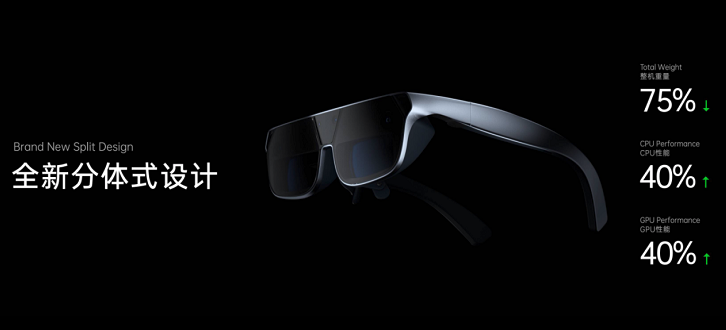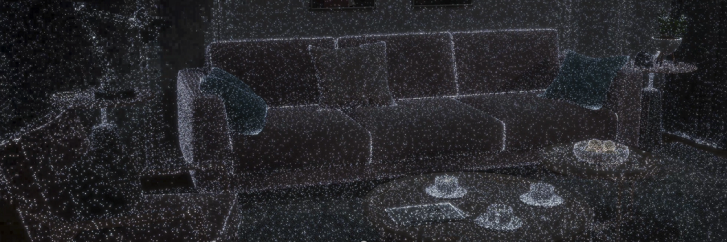OPPO is Working on Developing an Entire AR Ecosystem

OPPO has been actively deploying AR cutting-edge technology since 2018. The company has successively launched its open AR platform, two generations of AR glasses prototypes, and self-developed SLAM algorithm, gesture tracking, body tracking and depth perception four AR systems.
These core capabilities not only provide excellent parameters such as delay, accuracy and power consumption, but also can seamlessly adapt to various lenses of OPPO mobile phones and AR glasses, highlighting the advantages of OPPO's combination of software and hardware.
At the same time, OPPO is aware of the importance of developers to the construction of the content ecosystem. With that said, the company launched the "OPPO AR Developer Co-creation Project" this year. The goal of this project plan is to provide an incentive plan launched by OPPO for AR developers, covering the 2021 Qualcomm XR Innovation Application Challenge, OPPO AR Special Award Track, OPPO AR Developer Salon, and OPPO AR Creative Competition.
The final selected team or individual will be provided with dedicated development funds and investment docking opportunities, online/offline resources, and developer innovative technical support and other multi-dimensional support to help outstanding developers grow better and become a broader innovative AR application.
OPPO was founded in 2004 and is now one of the world's five major smart phone brands. Its mobile phone series are sold in more than 40 countries and regions around the world, and it has more than 400,000 stores worldwide.
In 2019 alone, OPPOs R&D investment was close to 10 billion RMB (ie., 1.55 billion USD). At the same time, the company have also established a global R&D system, with 6 research institutes, 5 R&D centers and more than 10,000 employees worldwide R&D personnel, accounting for 1/4 of the total number of employees. The six research institutes are located in Silicon Valley, Japan, Yokohama, Shenzhen, Shanghai, Beijing and Dongguan. The five R&D centers are located in Shenzhen, Dongguan, Hyderabad, Chengdu and Xi'an.
In the future, OPPO will continue to increase investment in R&D and innovation, and explore more cutting-edge technologies, and AR is a key area of OPPO's cutting-edge exploration.
In fact, OPPO is not just beginning to explore AR related technologies. The company have established a multinational AR R&D team long ago, mainly for the research and development of AR underlying technologies.
As early as 2018, OPPO launched the open AR platform. The company believes that with the development of AR technology and the progress of display technology, wearable devices such as AR glasses are accelerating their integration into social production and life. Therefore, the OPPO R&D team started to combine existing AR research and development results to try to develop AR glasses prototypes. At the end of 2019, the company released the first generation of AR glasses prototype. Through the design and development of the first generation of prototypes, the company have accumulated rich experience in AR glasses research and development, and continued to improve the industry's pain points.
But hey, I am personally not a big fan of wearing glasses, could an AR hat beat the idea of wearing glasses? Check out Facebook's patent on an AR hat.
The final result is the second generation of AR glasses-OPPO AR Glass 2021, released in November last year. OPPO have made significant optimizations in various designs and improved some of the core parameters and performance of the device.
Key core technologies and mature hardware platforms are very important, but content innovation and maturity are also a very critical piece of industry maturity, and this requires OPPO and developers to implement it together. Therefore, the company launched the "OPPO AR Developer Co-creation Program" this year, hoping to provide developers with a full range of support for AR content innovation through this program, and to explore applications in various scenarios with developers.
The company will continue to increase investment and work with industry partners and developers to accelerate the development of the industry to mature.
OPPO AR Glass 2021 adopts a split design and connects to a mobile phone through a USB cable, which is 75% lighter than the first-generation glasses, and the performance of CPU and GPU has also increased by more than 40%.
In terms of optics, OPPO have adopted a self-developed optical solution to pursue the ultimate display effect. OPPO AR Glass 2021 has a significant improvement in brightness uniformity, contrast, and the number of pixels per degree compared to the first generation of glasses. Their glasses are equipped with binocular fisheye cameras and a TOF camera with three-dimensional perception capabilities. At the interactive level, these are also equipped with a self-developed gesture recognition algorithm, which can identify and track more than 20 key monitoring points with a single hand in milliseconds. The gesture algorithm is based on binocular language development, which has lower power consumption, faster recognition speed, and larger motion assistance range. It also supports the semantic recognition of gestures.
Last year, OPPO's self-developed "Fantasy Forest" game is a full-gesture tower defense game. Users can get started with only three simple gestures.
AR applications need to allow users to realize the virtual world, the real world and the interaction between people through the device. Therefore, determining the location of the camera and the surrounding environment is the most basic ability. OPPO AR Glass 2021 is equipped with a self-developed positioning algorithm to achieve Real-time six-degree-of-freedom high-precision spatial positioning and three-dimensional reconstruction.
Lens image processed by SLAM algorithm

The main challenge of spatial positioning in the AR field is to complete high-precision and robust positioning and mapping on a platform with limited computing power. In some cases, it is limited by the hardware implemented by the algorithm, and the environment in which the device is located will also affect the algorithm. Produce varying degrees of impact. Therefore, the spatial positioning algorithm in the AR field should be designed and implemented according to the equipment and application scenarios.
The advantage of OPPO AR's self-developed SLAM algorithm is the combination of software and hardware, compatible with mobile phones and glasses, and support for multiple sensors, that can adapt better to their own hardware devices, and make targeted optimization for target application scenarios.
Optics is the core technology of AR, and it is also a key technology to be broken through. There are various technical directions and paths in the current industry, which are not perfect. The future optical technology needs to be optimized for product users and scenarios.
Main architecture of OPPO AR glasses.
In terms of sensors, OPPO adopted a binocular fisheye camera and a ToF lens; in the optical part, they adopted a Birdbath optical solution. Of course, the development of the AR industry lies not only in technology and hardware, but also in the exploration of content and the maturity of the content ecology.
In terms of content, OPPO have teamed up with iQiyi and JD to create AR viewing and shopping experiences, and developed multiplayer battle games, tower defense games using gestures, and other content.

